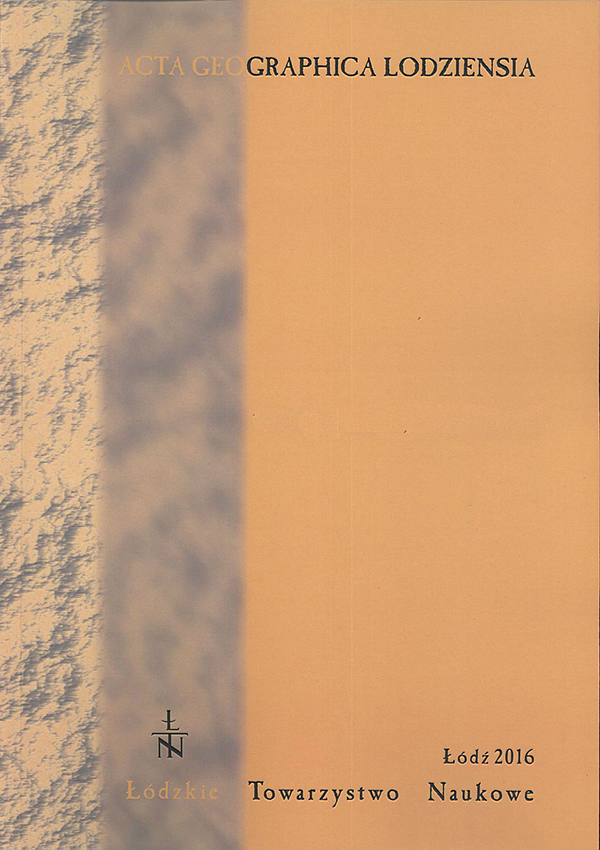Znaczenie torfowisk dla wnioskowania o reaktywacji zmarzliny w młodszym dryasie
Significance of peatlands for the reactivation of permafrost in the Younger Dryas
Author(s): Danuta Dzieduszyńska, Joanna Petera-ZganiaczSubject(s): Geography, Regional studies, Environmental Geography
Published by: Łódzkie Towarzystwo Naukowe
Keywords: peat; lithological conditions; involutions; discontinuous permafrost; Łódź Region
Summary/Abstract: In Central Poland, the cycle of peat sedentation in basins of biogenic sedimentation began in theOlder Dryas or even slightly earlier. Thus, in the Late Vistulian landscape the peatlands could have been common. Some of them are still present on the surface, while the other ones are buried by the Holocene cover. The aim of the article is to prove the usefulness of peatbogs to reconstruction suchfeatures of the Younger Dryas environment as the presence of permanently frozen ground.The study was carried out for the profile of the extensive low terrace of the middle Warta Rivervalley. The depositional succession of this terrace is composed of organic-mineral series with a peatadmixture, followed by fine sand and silt series reaching the present-day (Fig. 2). The series rests onthick sandy deposits. Such a situation was registered in the area of at least 18 km2. The organicmineralseries varies in thickness, from a maximum of 50 cm while in places being reduced to below20 cm. The age of this deposit was determined using the radiocarbon method at the Alleröd declineand the Younger Dryas. At the boundary zone between the organic series and the underlying mineraldeposits an abundance of deformation structures developed, represented by involutions (Photo 1) andsome frost fissures. A few different type of involutions may be distinguished: fold structures creating sinusoidal undulations, flat-bottomed structures with distinct base at a constant depth (Photo 1A), drop structures which lost contact with the host series (Photo 1B), diapirs squeezed into sediments of theorganic-mineral series (Photo 1C), flame-like structures developed by an injection of sandy and sandysiltymaterial which occur singly or in groups (Photo 1D). Irregular structures developed where theorganic series contains assemblages of tree remains which constitute rigid elements complicating deformation processes. The authors proved that lithological conditions of the studied structures, werebeneath the layer with an admixture of peat favorable for permafrost preservation. The presence ofpeat material provides the low thermal conductivity of unfrozen peat, prevents warming of substratumin summer, while a high thermal conductivity of the frozen peat promotes ground cooling in winter. Therefore, beside a significant temperature drop during the Younger Dryas cooling, geologicalconditions determined the reactivation of the permafrost. Integration of the results of the present studieswith environmental data from the previous investigations was used to define the periglacial originof the disturbances, despite the lack of direct evidence such as ice-wedge or pingo ruins. Based on therecognition of the palaeogeographical conditions in the Łódź Region, the probable zones of the permafrosta gradation in that time were designated (Fig. 1B); they coincide with wide valley floors,pradolina bottoms and inactive valley sections, so in localities favorable to the development of peatbogs.
Journal: Acta Geographica Lodziensia
- Issue Year: 2016
- Issue No: 105
- Page Range: 81-91
- Page Count: 11
- Language: Polish

